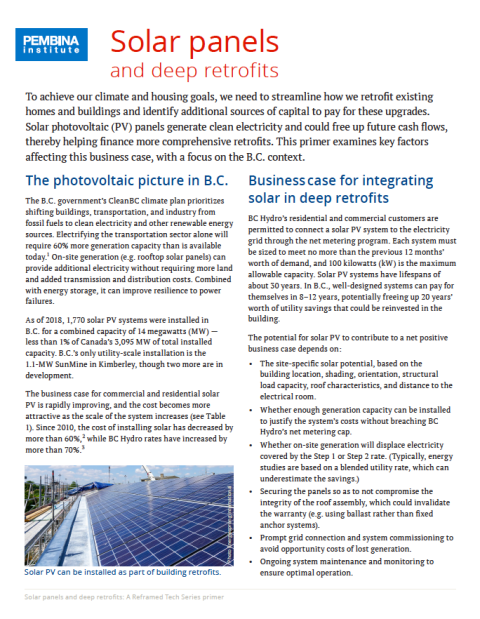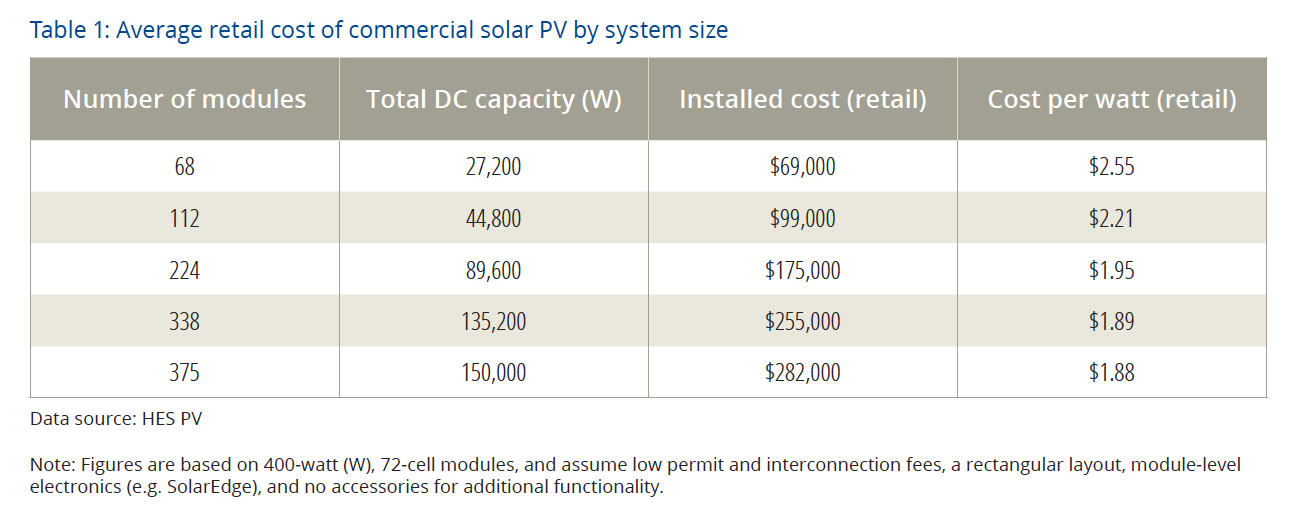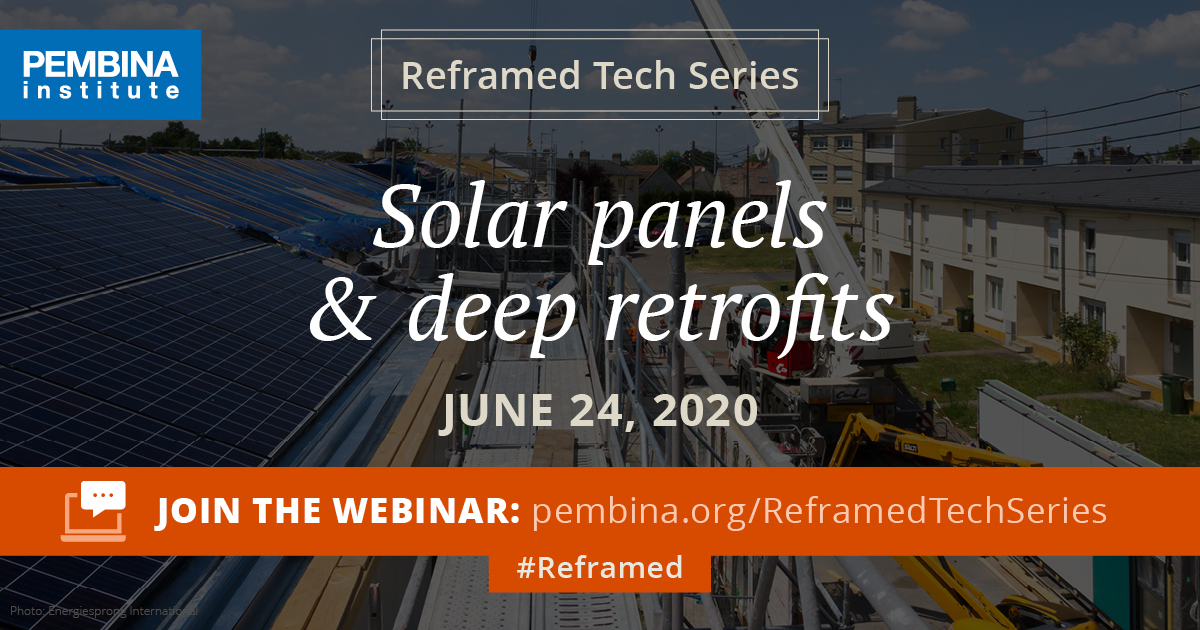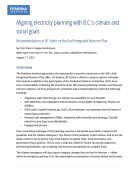To achieve our climate and housing goals, we need to streamline how we retrofit existing homes and buildings and identify additional sources of capital to pay for these upgrades. Solar photovoltaic (PV) panels generate clean electricity and could free up future cash flows, thereby helping finance more comprehensive retrofits. This primer examines key factors affecting this business case, with a focus on the B.C. context.
Download the primer, or keep reading below.
Find more resources to help local governments accelerate deep retrofits.
The photovoltaic picture in B.C.
The B.C. government’s CleanBC climate plan prioritizes shifting buildings, transportation, and industry from fossil fuels to clean electricity and other renewable energy sources. Electrifying the transportation sector alone will require 60% more generation capacity than is available today. On-site generation (e.g. rooftop solar panels) can provide additional electricity without requiring more land and added transmission and distribution costs. Combined with energy storage, it can improve resilience to power failures.
As of 2018, 1,770 solar PV systems were installed in B.C. for a combined capacity of 14 megawatts (MW) — less than 1% of Canada’s 3,095 MW of total installed capacity. B.C.’s only utility-scale installation is the 1.1-MW SunMine in Kimberley, though two more are in development.
The business case for commercial and residential solar PV is rapidly improving, and the cost becomes more attractive as the scale of the system increases (see Table 1). Since 2010, the cost of installing solar has decreased by more than 60%, while BC Hydro rates have increased by more than 70%.
Business case for integrating solar in deep retrofits
BC Hydro’s residential and commercial customers are permitted to connect a solar PV system to the electricity grid through the net metering program. Each system must be sized to meet no more than the previous 12 months’ worth of demand, and 100 kilowatts (kW) is the maximum allowable capacity. Solar PV systems have lifespans of about 30 years. In B.C., well-designed systems can pay for themselves in 8–12 years, potentially freeing up 20 years’ worth of utility savings that could be reinvested in the building.
The potential for solar PV to contribute to a net positive business case depends on:
- The site-specific solar potential, based on the building location, shading, orientation, structural load capacity, roof characteristics, and distance to the electrical room.
- Whether enough generation capacity can be installed to justify the system’s costs without breaching BC Hydro’s net metering cap.
- Whether on-site generation will displace electricity covered by the Step 1 or Step 2 rate. (Typically, energy studies are based on a blended utility rate, which can underestimate the savings.)
- Securing the panels so as to not compromise the integrity of the roof assembly, which could invalidate the warranty (e.g. using ballast rather than fixed anchor systems).
- Prompt grid connection and system commissioning to avoid opportunity costs of lost generation.
- Ongoing system maintenance and monitoring to ensure optimal operation.
Combining retrofits and solar PV installation offers opportunities for cost savings:
- Solar PV can help finance large capital projects. When solar PV installation is integrated with a deep retrofit, the system contributes to retrofit costs through energy savings as soon as it is up and running.
- In B.C., cost savings are maximized in cases where solar PV displaces Step 2 electricity. This could be synergistic with electrification of building heating.
- Installing solar PV at the time of a roof replacement can simplify warranty issues — especially when the same contractor handles both — and align the timing of end-of-life replacement.
To facilitate this market transformation, we are preparing projects that demonstrate the feasibility of whole-building retrofits.
Key considerations
- How can pairing solar PV installation with roof retrofits reduce installation costs and improve the business proposition?
- How does the electrification of building heating change the business case for solar PV? What synergies can reduce costs and increase revenue?
- What minor modifications or clarifications to BC Hydro’s net metering policy could facilitate solar PV?
- What other changes to net metering policies could maximize the benefits for the electricity grid (e.g. demand response) and community resilience? How should these factors be integrated as BC Hydro considers the merits of various sources of electricity supply in the lead-up to its 2021 Integrated Resource Plan?
Join a webinar
The Pembina Institute presents the Reframed Tech Series — webinars on evolving deep retrofit solutions. Watch our fourth webinar to hear from leaders in integrating solar panels into deep retrofit solutions.
The Pembina Institute is leading an initiative to scale up deep retrofits for healthy, safe, and low-carbon housing. This is an opportunity for companies to showcase innovation and get in on the ground floor of a market transformation. Learn more.









